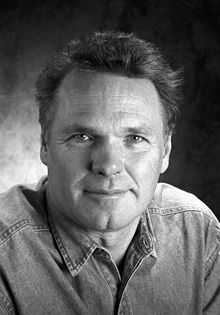Chris Welsby

Chris Welsby (born in 1948 in Exeter, Great Britain) is a British experimental filmmaker, author of film installations, and multimedia artist. In the 1970s he was a member of London Film-Makers' Co-op (now LUX), co-founder of the British scene of structural film.
Life
Chris Welsby was born in Exeter. He started creating and exhibiting his works in 1969. Welsby studied painting at the Central School of Art in London (1969–1970), BA (Fine Art) Chelsea College of Art and Design (1970–73). In 1975 Welsby graduated from the Experimental Media Department at the Slade School of Fine Art, University of London, where he worked as a lecturer (1976–1989). Since 1989 he is Professor of Film and Digital Media at Simon Fraser University in Vancouver, where he currently resides. Welsby is also a member of ICICS (Institute for Computing, Information, and Cognitive Systems) at the University of British Columbia, Vancouver Canada.
Selected Works
Park Film
During three days, from dusk till dawn, the artist recorded human activity at the park, using time lapse technique. He took the picture every time someone came into the frame or came out of the frame. The 8-minute film is composed of those frames.
Windmill II
Silent, 8-minute film presents human activity at the park during sunny, windy day. A windmill was installed in front of the camera, its blades serving as mirrors reflecting the image. Wind moves the windmill and as a result between the blades one can see the space in front on the windmill and on the blades’ surface the space behind the camera is reflected: camera itself, author, people walking. The more the wind blew, the more these two spaces blended in the film, which caused the image becoming more abstract.
Fforest Bay
The camera was placed in a small bay, rotating around its axis. The pictures were taken every 45 degrees (8 positions of the camera). Camera’s axis was leaning 60 degrees to the horizon, so the clouds are visible (from below), as well as the bay with people reclining on the beach and the water surface (seen from above). The film was shot using time lapse technique, one frame per second. During the first spin camera made one picture for each of eight positions. With every spin the number of frames is increasing by one, until it reached 30 frames (1.25 second of the film). This sequence is accompanied by the high-tide visible on the screen. As the length of the takes reached maximum, the high tide changed into the low-tide and the second sequence begins, in which the number of frames is decreasing by one and reaches minimum when the film ends.
Tree
On a windy day the camera was attached to a branch on a tree, recording surrounding landscape. This silent film is composed of one 4-minute shot.
Shore line I
This film installation is composed of six projectors turned 90 degrees. Single images are joined by vertical edges, composing wide, single projection space. Each projector screens the same looped film of shoreline, yet the films are not synchronized. Although the films are silent, the installation is accompanied by the sound of the film projectors.
Further reading
- Curtis, David, A History of Artists' Film and Video in Britain, BFI Publishing, 2007, p. 97-99, ISBN 1-84457-095-9
- Rees A. L., A history of Experimental Film and Video, BFI Publishing, 1999, p. 80–81, 93, 116–117, ISBN 978-0-85170-681-8
- Young, Paul, Duncan, Paul, Art Cinema, Taschen, 2009, p. 82, ISBN 978-3-8228-3594-4
External links
- Chris Welsby's Official Page
- Interview with Chris Welsby on YouTube
- Chris Welsby's profile on www.luxonline.org.uk
- DVD with Films by Chris Welsby published by the British Film Institute